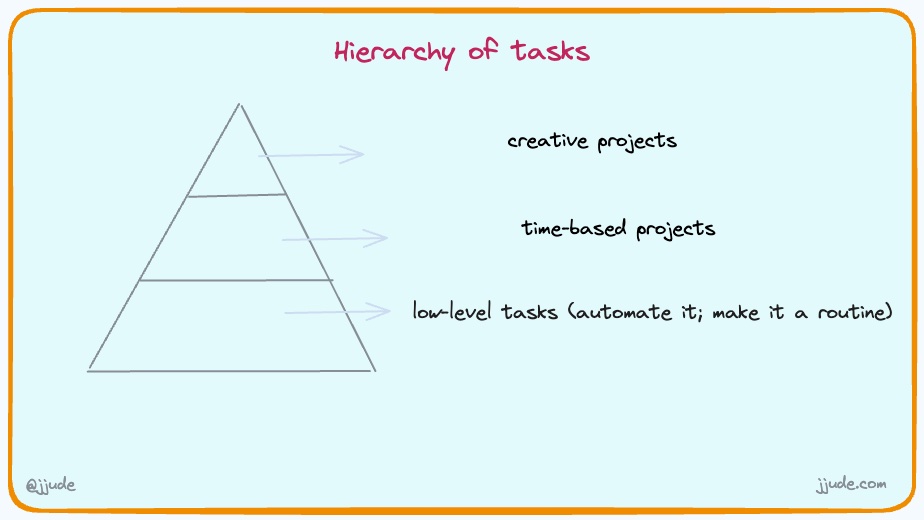
You can sort any task into three categories:
- routine, low-level tasks;
- time-based, deadline-driven tasks; and
- creative tasks.
The more time you dedicate to creative tasks, the better your output will be. For that to happen, you need to keep low-level tasks as frictionless as possible.
Podcast Example
Take my podcast for example. Tasks for the podcast involves finding guests, crafting questions, conducting interviews, editing, creating video thumbnails, and sharing on social media. The podcast focuses on leadership rather than design, so I’ve simplified my thumbnails to just two colors and one font in three sizes. This makes it a low-level task that can be done quickly. I also have templates for guest communications that are easily copied and pasted. These routine tasks are now automated or streamlined.
Time-based tasks include scheduling interviews on specific dates and releasing episodes every Tuesday at 6 a.m. These deadlines keep me focused.
My creative work lies in discovering the theme or perspective to shape the interview and its questions. That’s where I want to spend most of my time—thinking and framing the questions. If I spend too much time on thumbnails and social media sharing, I’ll have less time for this vital creative work.
Of course, your priorities may vary. If you’re a designer, you might want to spend more time on thumbnail design. So, depending on your focus, adjust your task hierarchy accordingly.
Take writing and publishing a blog post as another example. For me, writing is thinking and seeking answers. I want as little friction as possible to focus on my writing. That’s why I’ve made hosting platforms, color themes, fonts, dictation tools, and editing low-level tasks. This way, I can spend more time pondering what to write about and actually writing instead of fiddling with design details.
Creativity depends on routinized low-level activities
The more tasks you can turn into routine, low-level duties, the more time and energy you’ll have for creative work. This doesn’t mean low-level tasks aren’t important; they are. But streamlining them frees up your cognitive power for creativity.
Imagine your day as a series of tasks in different buckets. The better you can sort these tasks, the smoother your day will flow. By turning many daily activities into low-level tasks, you’ll reduce friction and save energy for what truly matters. For example, my morning routine is filled with streamlined tasks, from fitness to learning new things.
Knowing the hierarchy of tasks will help you boost your creativity and output. So, focus on making routine tasks as efficient as possible to free up your mind for the creative work that truly makes a difference.
